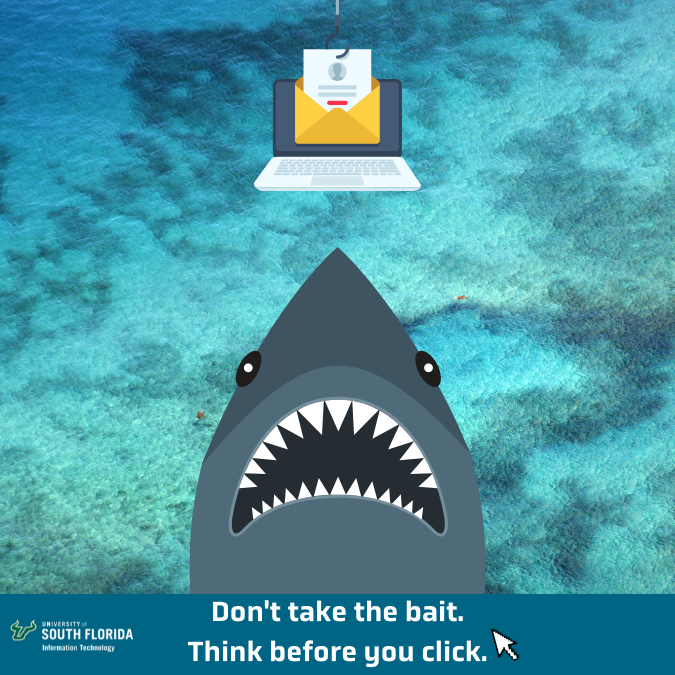
Dear USF community,
We would like to raise awareness about a growing concern that can put your accounts and data at risk - phishing attacks. Phishing is a fraudulent attempt to obtain sensitive information such as passwords, credit card details or other personal information. These attacks are becoming more sophisticated, and anyone can be a target, including university students, faculty and staff.
Phishing attempts usually come in the form of emails or messages that appear to be legitimate, often imitating well-known organizations or individuals. They can be very convincing and trick you into clicking on a link or opening an attachment. Once you do so, the attacker gains access to your computer or mobile device and can steal your personal information.
Here are some tips to help protect yourself against phishing attacks:
Remember: No one in IT or HR will ever send an email to you asking you for your password or your multi-factor authentication (MFA) code.
Check the sender's email address: Phishing emails often come from an email address that looks like a legitimate organization
but with a different spelling or domain name.
Be cautious of urgent requests: Phishing emails often create a sense of urgency or fear to prompt you to act quickly.
They may threaten you with account suspension, legal action or financial loss.
Look for suspicious links: Hover your mouse over any links before clicking them to check if they lead to the
correct website. Phishing emails often use links that are similar in appearance to
a legitimate website but lead to a fake one.
Note features provided by Outlook: Our email system can help identify a suspicious request by telling you if you are
receiving an email from someone you don't normally correspond with, or if the email
contains links to somewhere outside of USF systems.
Be wary of attachments: Phishing emails may include attachments that contain malware, viruses or other harmful
programs.
If you receive an email or message that you suspect may be a phishing attempt, do not click on any links or attachments, and do not provide any personal information. To report a suspicious message, open the message in Outlook and select the "Report Message" link in the upper right, then select the appropriate option.
We encourage all members of the university community to be vigilant and stay informed about phishing attacks. By following these simple tips, you can help protect yourself and others from online scams.